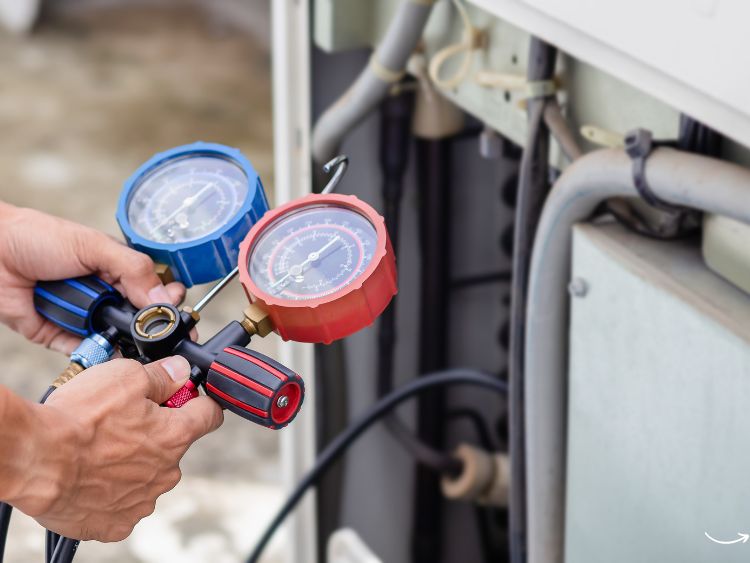Have you ever wondered what keeps the air flowing through your HVAC system? Meet the unsung hero of your heating and cooling setup—the HVAC blower motor. This essential component works tirelessly to ensure your home stays comfortable year-round. Whether you’re cranking up the heat in winter or blasting the AC in summer, the blower motor plays a crucial role. But what exactly is an HVAC blower motor, and how does it work? Let’s dive in and find out.
What is an HVAC Blower Motor?
The HVAC blower motor is the heart of your heating and cooling system’s airflow. It’s responsible for pushing the heated or cooled air through the ducts and into your living spaces. Without it, your HVAC system would be unable to distribute air effectively, leaving you uncomfortable regardless of the temperature outside.
Types of HVAC Blower Motors
There are several types of blower motors, each with its unique features and benefits:
- Single-Speed Motors: These motors operate at one constant speed. They are straightforward and less expensive but can be less energy-efficient.
- Multi-Speed Motors: These offer more flexibility by operating at different speeds, providing better efficiency and comfort.
- Variable-Speed Motors: The most advanced option, these motors adjust their speed based on your home’s needs, offering the highest efficiency and comfort levels.
How Does an HVAC Blower Motor Work?
An HVAC blower motor operates by converting electrical energy into mechanical energy to spin the fan blades. Here’s a step-by-step breakdown of its operation:
- Electrical Input: The motor receives an electrical signal from the thermostat.
- Motor Activation: This signal activates the motor, causing it to turn the fan blades.
- Air Movement: As the blades spin, they pull air into the HVAC system and push it through the ducts.
- Air Distribution: The air is then distributed throughout your home, ensuring a consistent and comfortable temperature.
Key Components of an HVAC Blower Motor
Understanding the key components can help you appreciate how a blower motor works:
- Fan Blades: These are attached to the motor and are responsible for moving the air.
- Motor Housing: Protects the motor and contains essential components like bearings and windings.
- Bearings: Allow the motor to spin smoothly without friction.
- Windings: Coils of wire that create a magnetic field to turn the motor.
Signs Your HVAC Blower Motor Needs Attention
Regular maintenance is vital for your HVAC system, but sometimes issues can arise. Here are some signs that your blower motor might need attention:
Unusual Noises
Strange sounds, like grinding or squealing, can indicate problems with the motor bearings or other components. Don’t ignore these noises; they often signal a need for immediate repair or replacement.
Reduced Airflow
If you notice weaker airflow from your vents, your blower motor could be struggling. This issue can stem from several factors, including motor wear or blockages in the ducts.
Higher Energy Bills
An inefficient blower motor can cause your HVAC system to work harder than necessary, leading to increased energy consumption and higher utility bills. If you see a sudden spike in your energy costs, it’s worth checking the blower motor.
Overheating
A blower motor that’s too hot to touch may be overheating. This condition can lead to a complete motor failure if not addressed promptly.
How to Maintain Your HVAC Blower Motor
Regular maintenance can extend the life of your blower motor and keep your HVAC system running smoothly. Here are some tips:
Keep It Clean
Dust and debris can accumulate on the motor and fan blades, leading to reduced efficiency and potential damage. Regularly clean these components to prevent build-up.
Lubricate Bearings
If your motor has bearings that require lubrication, make sure to do this regularly. Proper lubrication reduces friction and wear, extending the motor’s lifespan.
Check Electrical Connections
Loose or corroded electrical connections can cause the motor to malfunction. Periodically inspect these connections and tighten or clean them as needed.
Replace Air Filters
Dirty air filters can restrict airflow, forcing the blower motor to work harder. Change your air filters regularly to maintain optimal airflow and efficiency.
Common FAQs About HVAC Blower Motors
How long does an HVAC blower motor last?
With proper maintenance, an HVAC blower motor can last between 10 to 20 years. However, factors like usage, environmental conditions, and maintenance frequency can impact its lifespan.
Can I replace my HVAC blower motor myself?
While it’s possible to replace a blower motor yourself, it’s generally recommended to hire a professional. HVAC systems are complex, and improper installation can lead to further issues or even damage to the system.
How much does it cost to replace an HVAC blower motor?
The cost can vary widely depending on the type and size of the motor, as well as labor costs. On average, you can expect to pay between $400 and $1,200 for a replacement.
What causes an HVAC blower motor to fail?
Several factors can lead to blower motor failure, including:
- Lack of maintenance
- Overheating
- Electrical issues
- Bearing failure
- Blockages in the airflow
Can a faulty blower motor affect my HVAC system’s efficiency?
Absolutely. A failing blower motor can reduce airflow, making your HVAC system work harder to maintain the desired temperature. This increased effort can lead to higher energy bills and reduced overall efficiency.
Conclusion
Understanding your HVAC blower motor is crucial for maintaining a comfortable and energy-efficient home. By knowing the signs of potential issues and performing regular maintenance, you can ensure your blower motor operates smoothly for years to come. Remember, when in doubt, consult a professional to keep your HVAC system in top-notch condition. So, next time you feel that perfect indoor breeze, you’ll know exactly who to thank—the trusty HVAC blower motor.







